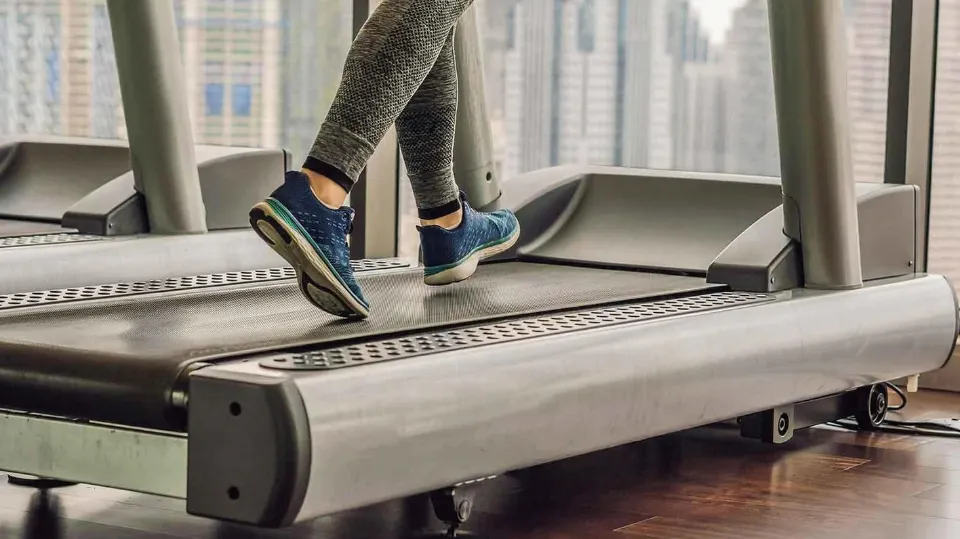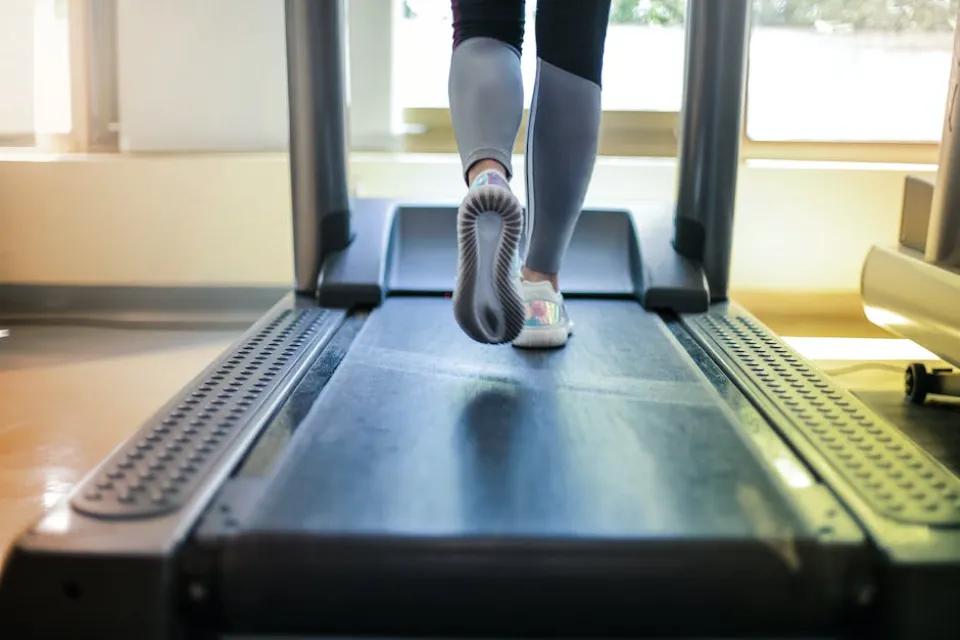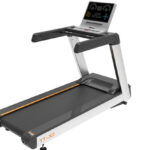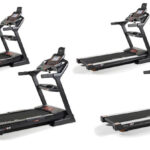What Does Decline On Treadmill Do – Are They Worth Using?

Since they enable more intense workouts, the majority of people today look for treadmills with decline functions or negative incline treadmills. These treadmills give you a special experience that regular treadmills can’t, making them the best way to get you ready for challenging competitions.
Targeting various leg muscles is possible on incline and decline treadmills. On a treadmill, decline training changes the parameters so that you can focus on various muscle groups.
What Does Decline on Treadmill Do?
Weight Loss

A treadmill’s incline motor should be present if it will be used for weight loss, so make sure to check before you buy. Separate from the belt motor, the incline motor frequently has its own warranty. It makes switching between steep and gradual inclines on the treadmill easier. To prevent the user’s body from becoming accustomed to the incline of their workout, some treadmills even have programs that change the incline at random. If the user adjusts the incline themselves, it’s crucial to do so gradually (e.g., by.5% to 1% every two minutes).
A crucial element of weight loss is exercise intensity. Generally speaking, for the greatest calorie-burning effect, athletes should maintain heart rates between 70% and 85% of their maximum heart rate. Exercise at 90% of one’s maximum heart rate has been linked to heart attacks and strokes. Even if the action is performed for a long time, exercising at a lower intensity doesn’t burn as many calories. It’s crucial to monitor heart rates while exercising, and many treadmills do so.
Another element in weight loss is consistency. Adults need at least 30 minutes of physical activity five days a week, according to research compiled by the Centers for Disease Control and Prevention. Exercise is better than none at all, but most people don’t get enough of it. People with treadmills in their home are more likely to workout because of the convenience.
Reduced Injury Risk
By increasing the treadmill’s incline, you can increase the intensity without putting more strain on your joints than you would by running or walking outside. This lowers your risk of knee and hip injuries. Additionally, it stretches the calves and Achilles tendons, which is advantageous for people with foot conditions like plantar fasciitis. Lower back pain sufferers should reduce the incline of their walking and gradually increase the intensity of their workout as their back muscles get stronger. Walking at an incline can aggravate lower back pain.
A study published in the Journal of Sports Science and Medicine found that a 3% increase in treadmill incline results in a 24% reduction in the amount of impact the legs must take. While increasing the intensity of the workout, a slight incline further reduces the stress on the body’s joints, which are already less stressed when running on a treadmill than when running outside.
Do You Need a Decline Treadmill?
Personally, I believe that companies started selling treadmills with a decline simply as a selling point. Really, they don’t add much to the effectiveness of your workouts and just drive up the machine’s cost. You should practice going downhill outside if you really want to. It exercises more muscles that are necessary to complete it and is more realistic for your body.
A maximum decline of -5% is the highest I’ve ever witnessed. Yet inclines are usually 15% and you can get 40%. Because there is no longer a need for them, manufacturers hardly ever produce treadmills that can decline. If you’re a serious runner, you’ll be training outside rather than on a treadmill decline. Investing in a treadmill with streaming classes or another motivating feature is preferable.
Decline Treadmill Benefits
- Impact of Declines on Muscle Groups: Quadriceps muscles are recruited when running decline on a treadmill. This implies that different body parts will be worked by running downhill. However, according to experts, when beginning, you should start at an incline and decline level that you are comfortable with.
- A Strengthening Boost for Leg Connective Tissues: The connective tissue in human legs strengthens as a result of running on a treadmill with a descending incline.
- Gaining an Edge in Competitions: People who want to win the competition should decline training. It implies that using a declined treadmill will enable you to run more quickly and with less effort.
- Better Cardiovascular Endurance: The human body can strengthen the heart and lungs by running downhill. As a result, the heart will naturally beat more rapidly and vigorously while moving downhill, strengthening the lungs as it does so. In other words, treadmill decline exercise increases cardiovascular endurance.
- The benefit of Adding Variety: Your body will work hard and burn more calories per minute if you incorporate variations into your exercise routine. Compared to using conventional machines, running downhill makes it easier for people to achieve their fitness goals.
However, you might be surprised to learn that few treadmills have aging features. You will have a few options to choose from if you research the decline treadmill market.
We have identified the top nine incline decline treadmills by taking into account all of these factors.
Why Are Incline/Decline Treadmills More Expensive
The fact that incline and decline treadmills are typically a little more expensive than treadmills without that feature is one of their few drawbacks. The majority of treadmills will give you at least 10 degrees of incline, but you’ll have to pay more for 15, 20, or 30%.
The Incline Trainers from NordicTrack, including the well-known X11i, offer the highest market incline capability—a whopping 40%—as well as the greatest decline capability—6%.
But these cutting-edge cardio machines are unquestionably expensive, with base models starting at around $2,000 and top-of-the-line models costing $4,300.
Therefore, even though the added capability is nice, purchasing a treadmill with steep incline and/or decline capability may be out of your price range.
The bottom line here is that incline and decline training is beneficial, but not an absolute must, especially if budget is a concern. You can get a great walking, jogging, or running workout on some of the best treadmills on the market without much incline and zero decline.
Running Downhill Tips
If you use a treadmill with a decline to train for a race that includes a downhill section, you have access to one. The physical strain can be reduced in a number of ways. If you can’t get outside, it may make sense to practice on your treadmill. Take it slow and avoid abruptly running downhill on a treadmill for long stretches of time. On a treadmill, you could replicate all the elevation changes in a race.
The quads are strengthened when you run downhill. Your stride will be quicker and shorter. We are all aware of how running on hills causes a change in our gait. I never advise using the incline or decline excessively. To minimize any muscle soreness you may experience, keep your use to once per week.
Even though running faster downhill doesn’t necessarily result in faster times, Utilizing a decline has no positive effects on your overall running speed. I’ve heard there was. Speed training is the best option if you want to improve your speed. The best type of run for this would be an effective fartlek or interval workout. Ideal for this are treadmills.

Final Thoughts
You shouldn’t use a decline for an extended period of time because it’s bad for your joints. I advise against assuming that this characteristic elevates one treadmill above another. When selecting one, there are additional crucial characteristics to consider. They aren’t produced frequently anymore, and for good reason. They simply don’t have much of a market.
Treadmill Incline FAQs
Which Treadmill Has the Best Incline Features?
The NordicTrack Commercial X11i is the incline trainer that our experts recommend most highly. The NordicTrack Incline Treadmill line has a grade incline of up to 40%, simulating climbing the steepest hills. If you’re looking for the best treadmill for you, check out our list of the Best Incline Trainers.
Is Walking on An Incline Good for Weight Loss?
Intensifying your workout by running or walking up a hill is a great way to burn more calories. Your body works harder and expends more calories when you run or walk up an incline compared to when you do the same thing on a flat surface. Your fitness goals can be more effectively met with incline training.
What is a Good Incline Setting on a Treadmill?
Your fitness level and goals will determine the appropriate incline settings. A good place to start is 2% – 3% incline and gradually increase the incline as necessary. Pay attention to your body at all times!









